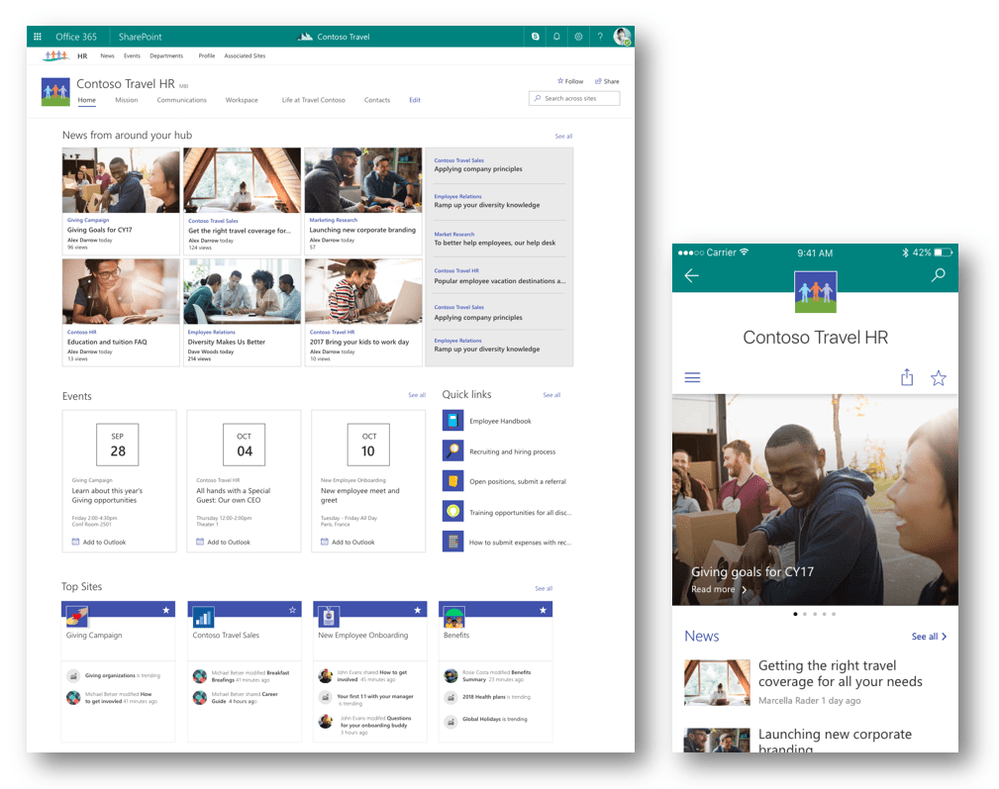As Microsoft starts rolling-out the new SharePoint hub site capability to First Release tenants, we suspect many of the intranet managers out there will be thinking about how they can put the new hub site capability to the test.
For a quick refresher on what hub sites are and why you’d use them, check out part one of the guide to hub sites. Remember:
The intent behind a hub site is to help organizations add structure, aggregate news, search across sites, and organize what normally would be a disconnected ecosystem of collaboration sites.
We expect organizations will use hub sites in different ways.
Smaller organizations of less than 500 employees may try to leverage hub sites and communications sites as an intranet. While the content experience will be somewhat limited to what you can configure across the modern sites, the experience will be relatively easy to setup and administer.
Larger organizations tend to prefer Microsoft’s existing web publishing capability for their intranet as it gives them much more feature flexibly, layout control and page authoring and publishing capability.
Regardless of your size, hub sites could be useful for the following scenarios:
- Department hubs — consider common shared services groups like IT, HR, Marketing or Finance where there are likely a large number of collaboration initiatives underway and natural structure in place for how work is being done. Much of this content management and collaboration happens under the radar of an intranet and only published content surfaces when it has broader global applicability.
- Regional hubs — for large organizations that have many regional locations or sites, hubs could be a great way to provide a sense of local identity and highlight communication from within the region.
- Project hubs or a PMO hub — most larger organizations have a PMO and manage a collection of Programs and Projects. Providing a simple mechanism to access all the active and completed projects and rolling-up project related announcements or status details are common needs that could easily be satisfied with a hub.
- Board hub — with Office 365, many companies are setting up their Boards with an externally available site to host critical board reports and meeting materials. Consider the benefit of a hub to serve as the central landing page for the board providing news on the homepage and links to critical content and upcoming board meetings. The benefit of having meetings or sub-committees managed as separate sites is they could be setup with unique permission to secure them appropriately as different audiences are brought into the board topics. Securing the content after the meeting is also easy and isolated from the newer meetings or materials that get managed at the root hub.
- Financial reporting hub — end of quarter and end of year financial reporting cycles often require a tremendous amount of collaboration across departments that all roll-up to finance. A logical use for hubs might be to serve as the aggregate site for a reporting period and then having associated sites attach from different departments as they work on their independent materials and reports.
Want to know more about hub sites and why you should use them?
- Read part one of guide to Office 365 hub sites to get your head wrapped around the basics.
- For architecture considerations and quick reference tips for Office 365’s SharePoint hub sites, read part three of the series.







